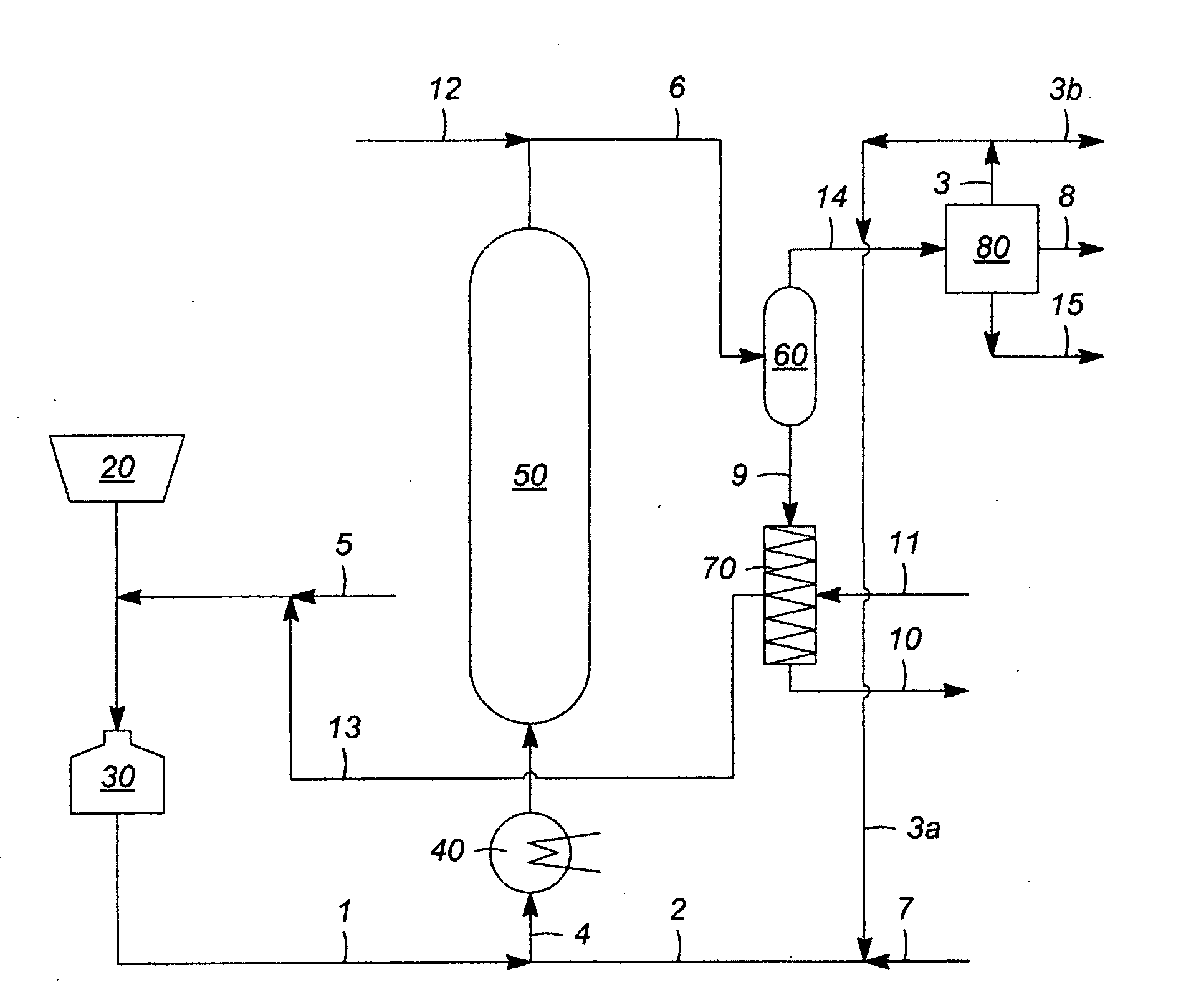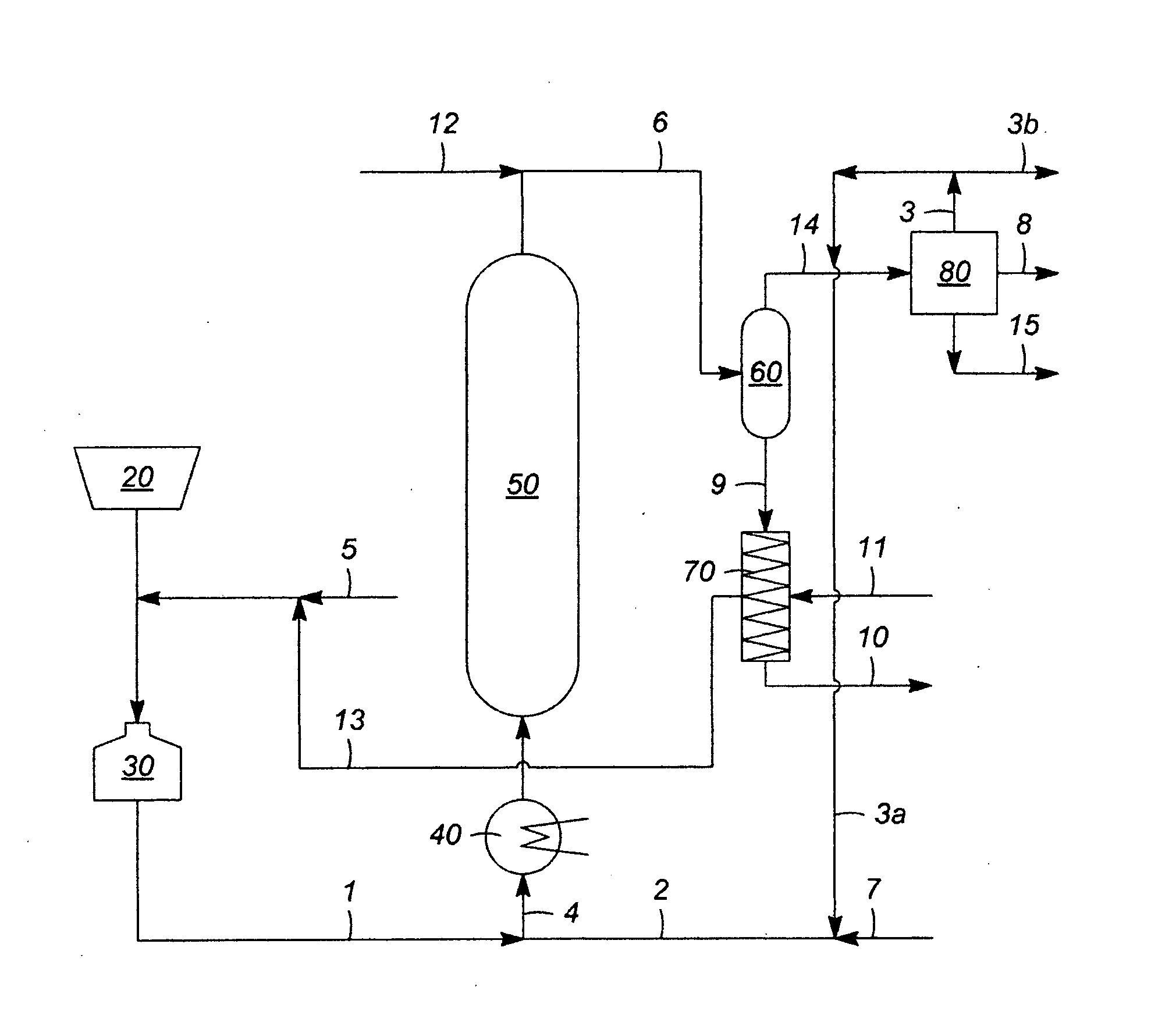Solids Management in Slurry Hydroprocessing
a technology of slurry hydroprocessing and solids management, which is applied in the direction of hydrocarbon oil cracking, hydrocarbon oil treatment, liquid hydrocarbon mixture production, etc., can solve the problems of affecting the filtration efficiency of slurry hydroprocessing, so as to promote the precipitation of asphaltene, and improve the filtration efficiency of solid parts
- Summary
- Abstract
- Description
- Claims
- Application Information
AI Technical Summary
Benefits of technology
Problems solved by technology
Method used
Image
Examples
example 1
[0053]A bench test verified that a flocculated solid particulate, from a representative liquid product of slurry hydroprocessing, was effectively filtered (or retained in a filtration retentate) using only a modest pressure drop of less than 200 psi to achieve nearly complete filtration at a cake thicknesses in excess of 0.125 to 0.25 inch. This was demonstrated using relatively low filtration temperatures in the range from 80° C. (176° F.) to 200° C. (392° F.).
[0054]Without being bound by theory, this experiment provided evidence that sufficient dispersal of the catalyst agglomerates was maintained to allow good cake permeability and reasonably low cake compressibility. According to Darcy's law, the pressure drop across the cake deposited on a filter is determined from the relationship ΔP=Qμθ / (KA), where ΔP=pressure drop, Q=flow rate, μ=fluid viscosity, θ=thickness, K=filter area, and A=permeability factor.
[0055]Thus, it was determined that the hydrocarbons that can be precipitated...
example 2
[0056]In a pilot plant test, a non-agitated vessel was used to receive the high pressure separator underflow or bottoms from the effluent of a slurry hydrocracking process, which was flashed to recover light gases. The vessel was maintained at 200° C. (392° F.). A mass of hydrocarbon and catalyst formed at the lower portions of this vessel, requiring some mechanical force to remove. In a second test, the vessel was circulated to allow the flocculated solids to maintain a suspension. If was found that the solids could be more easily filtered. It was expected that the cake could be removed using moderate force, such as normal backwashing. The solid mass, after washing with toluene to remove the associated oil, was found to have a softening point (ASTM D36) of greater than 200° C. (392° F.) and the onset of melting, as measured by thermomechanical analysis was also above 200° C. (392° F.).
PUM
| Property | Measurement | Unit |
|---|---|---|
| particle size | aaaaa | aaaaa |
| boiling point | aaaaa | aaaaa |
| temperature | aaaaa | aaaaa |
Abstract
Description
Claims
Application Information
 Login to View More
Login to View More - R&D
- Intellectual Property
- Life Sciences
- Materials
- Tech Scout
- Unparalleled Data Quality
- Higher Quality Content
- 60% Fewer Hallucinations
Browse by: Latest US Patents, China's latest patents, Technical Efficacy Thesaurus, Application Domain, Technology Topic, Popular Technical Reports.
© 2025 PatSnap. All rights reserved.Legal|Privacy policy|Modern Slavery Act Transparency Statement|Sitemap|About US| Contact US: help@patsnap.com


